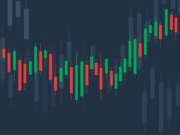As markets digest the ripple effects of proposed tariffs, tightening monetary conditions, and evolving tech regulation, some companies are managing not just to survive — but potentially thrive. We’re highlighting three stocks that are quietly positioning themselves to benefit from big shifts in their respective industries. While the broader indexes remain choppy, these names offer a compelling combination of resilience, upside potential, and exposure to powerful macro themes.
CarMax (KMX) – A Used Car Play That Could Gain From Tariffs
CarMax might seem like an unconventional beneficiary of trade policy, but that’s exactly why it’s on our radar. With tariffs on new car imports expected to take effect April 2, analysts are pointing out that consumers could increasingly turn to the used car market — a trend that plays directly into CarMax’s business model. One firm even labeled the start date for the duties “Liberation Day,” signaling a potential inflection point for pricing dynamics in the auto sector.
Stephens recently upgraded CarMax to “Overweight,” raising its price target to $90 per share — a move that implies over 20% upside from current levels. The call comes as CarMax delivered an earnings beat last quarter, posting $0.44 per share versus estimates of $0.22, despite revenue coming in lower than a year prior. Stephens’ analyst Jeff Lick cited real-time unit sales and stable credit metrics as reasons to remain confident in the company’s full-year guidance. He also noted CarMax’s consistent performance on used vehicle gross profit per unit — a key driver in a market where volatility in input prices can quickly squeeze margins.
What makes CarMax particularly interesting here is its ability to thrive in a dislocated pricing environment. As tariffs drive up new car prices and OEMs face pressure, CarMax could expand its spreads — buying low and selling high, without the overhead of manufacturing. It’s also viewed as an alternative way for investors to gain exposure to the auto sector without getting caught in the crossfire of international trade disputes. Shares are still down on the year, but have rallied in recent sessions as this narrative gains traction.
Coinbase (COIN) – Betting on Stablecoin Strength in a Shaky Crypto Market
Crypto may be cooling off — at least in terms of trading volume — but Coinbase’s story is evolving beyond the day-to-day swings in Bitcoin and Ethereum. While March saw a drop in platform activity, analysts are increasingly focused on the company’s growing exposure to stablecoins, particularly USDC. Coinbase has a 50% revenue-sharing agreement tied to the second-largest stablecoin on the market, and USDC’s market cap is up 36% year-to-date, outpacing larger rival Tether.
That’s a meaningful shift, especially as Washington moves closer to passing stablecoin legislation in the third quarter of 2025. According to Rosenblatt, investors may be underestimating just how much of Coinbase’s future value could come from non-trading revenue streams. Analyst Chris Brendler reiterated his Buy rating on the stock this week, despite a nearly 21% YTD drop, and set a price target of $305 — almost 60% above where shares were trading at the time of his call.
Coinbase CEO Brian Armstrong has already telegraphed a long-term push to make USDC the top stablecoin in the world — a bold goal, but not out of reach given the recent acceleration in adoption. If legislation passes and Coinbase’s role in the ecosystem is validated by regulators, the re-rating potential here could be substantial. For investors willing to look past short-term volume pressure, COIN may be one of the more misunderstood plays in the digital asset space right now.
Cloudflare (NET) – AI Meets Cybersecurity in One Scalable Platform
With the AI boom well underway and enterprise security more critical than ever, Cloudflare finds itself at the intersection of two multi-decade growth stories. The company’s core infrastructure — including its Secure Access Service Edge (SASE) model — positions it well to serve both traditional clients and next-gen AI players. That mix has earned it high marks from analysts, including a double upgrade from Bank of America and a raised price target of $160.
Cloudflare was also recently highlighted by Pivotal Advisors as a top-tier play in the cybersecurity space, with Tiffany McGhee citing the company’s versatility, scalability, and clean user experience as major strengths. What’s particularly compelling is how Cloudflare isn’t just riding one trend — it’s helping define the way networks will operate in the future. As more companies rely on real-time data transfer and cloud-based security, Cloudflare’s infrastructure becomes an increasingly central piece of the puzzle.
Technically, the stock has pulled back in 2025, making it one of several high-growth names affected by the broader market’s risk-off tone. But sentiment could shift quickly if the market begins to recover, or if Cloudflare lands another major enterprise deal. With strong institutional backing, a multi-pronged growth strategy, and exposure to both AI and cybersecurity tailwinds, this is a name to keep a close eye on — especially for long-term investors looking for a high-conviction dip-buy.










